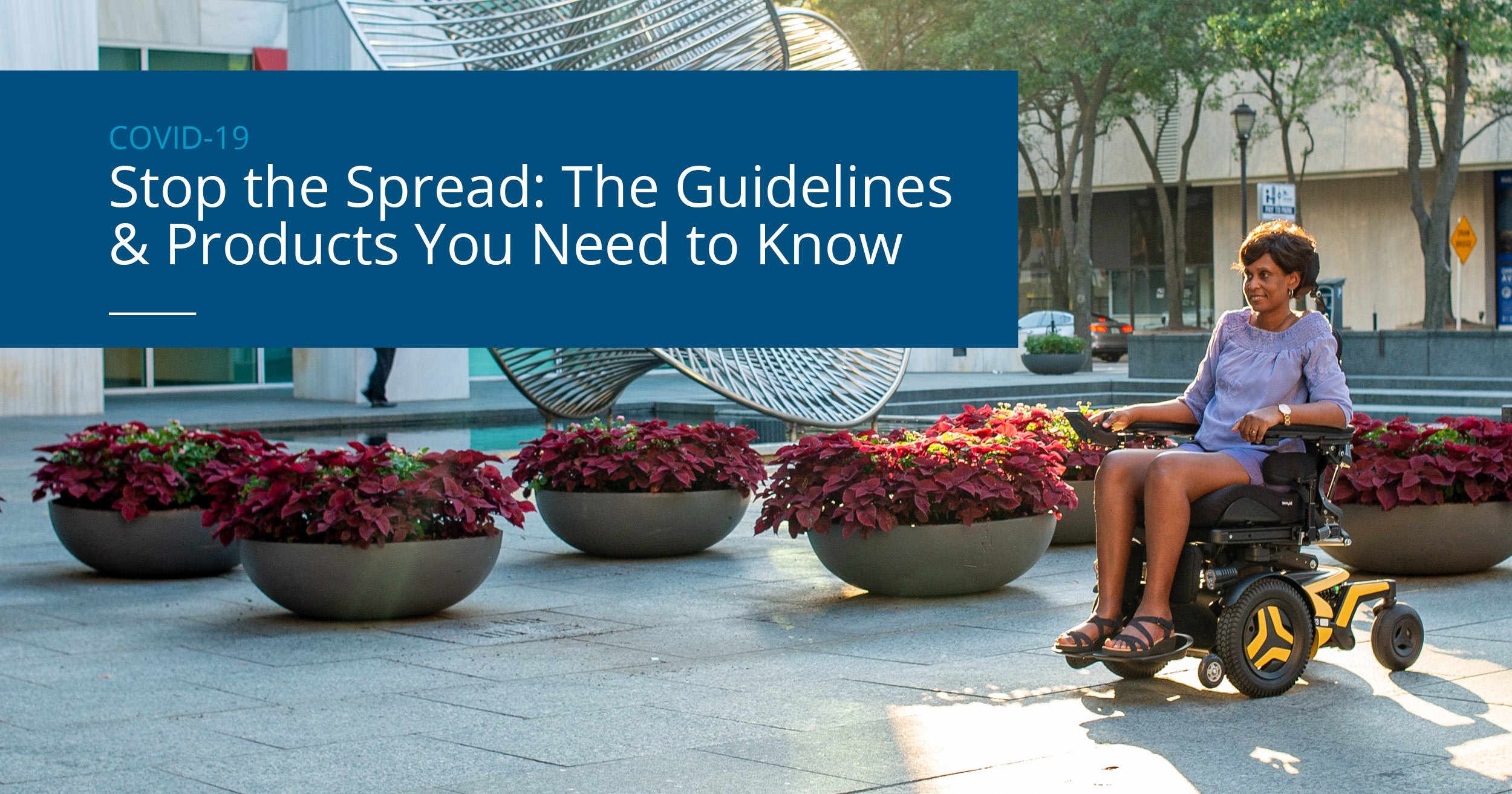This is the first of our series about dual protection in the pandemic: infection control and pressure injury prevention. See part 2, part 3, and part 4.
Two major areas of concern surround the healthcare community during the COVID-19 pandemic:
- Infection control to prevent the spread of the COVID-19 virus;
- Pressure injury management from the support surfaces of the bed and wheelchair for individuals that are less mobile due to the illness.
You should approach these two issues jointly. Thankfully, there are solutions that allow caregivers to meet the Center for Disease Control and Prevention (CDC) guidelines for infection control, while simultaneously protecting the skin to minimize the risk of pressure injury development.
In this 4-part blog series, we are going to review two important documents that should be followed to ensure the highest level of care:
- CDC infection control guidelines
- National Pressure Injury Advisory Panel’s (NPIAP) Prevention and Treatment of Pressure ulcers/Injuries: Clinical Practice Guideline
Today’s focus is on the CDC guidelines for infection control and product recommendations.
Guidelines to Follow
First, it is important to distinguish the difference between cleaning and disinfecting, and how to perform each. The CDC defines:
- Cleaning: the removal of dirt and impurities, including germs, from surfaces. Cleaning alone does not kill germs. But by removing the germs, it decreases their number and therefore any risk of spreading infection.
- Disinfecting: works by using chemicals, for example EPA-registered disinfectants, to kill germs on surfaces. This process does not necessarily clean dirty surfaces or remove germs. But killing germs remaining on a surface after cleaning further reduces any risk of spreading infection.
So, when a facility identifies a new case of infection, they must focus on cleaning and disinfecting all surfaces that caregivers and providers will encounter while administering care.
Products to Consider
The two primary surfaces are mattresses and seat cushions. The use of products that can be EASILY AND EFFECTIVELY cleaned and disinfected to prevent the spread of infection is key. To ensure this, it is critical to understand the difference between cleaning and disinfecting procedures for porous vs. non-porous surfaces.
Porous Surfaces - open cell foam or linens allow the virus to easily enter and contaminate the material. Once contaminated, a porous surface must be:
- Cleaned with appropriate cleaners indicated for use on these surfaces;
- Laundered with the manufacturer’s instructions using the warmest appropriate water setting for the items;
- Dried completely.
However, many large porous surfaces, such as foam mattresses, cannot be laundered. There is also no proof that a spray cleaner or disinfectant can get into every nook and cranny to effectively prevent the spread of the virus.
For this reason, it is safer to use non-porous mattress overlays or seat cushions that can more easily be cleaned and disinfected effectively to reduce the spread of infection.
Non-porous surfaces - in contrast, a “closed” non-porous surface can simply be cleaned and disinfected per the CDC*:
- Clean using a detergent or soap and water prior to disinfection;
- Disinfect by using either of the following:
- Diluted household bleach solutions (at least 1000ppm sodium hypochlorite)
- Common EPA-registered household disinfectants
Disinfect to Protect
There are many challenges facing us during this pandemic. Infection control can and should be simplified to reduce stress, risk, time, and labor.
Use non-porous surfaces that can be EFFECTIVELY cleaned and disinfected to take the anxiety out of the equation. During these challenging times, you don’t need staff worrying, “Am I using the appropriate methods and products to prevent the spread of COVID-19?”
Permobil has products that can be cleaned and disinfected per CDC guidelines, while also providing skin protection. This helps individuals who are confined to beds, bedside chairs, or are using their wheelchairs for longer periods of time than normal during the pandemic.
Join me in the next blog when we focus on pressure injury management and look at a message from the president of the NPIAP.
*It is important to note that as the knowledge of this virus grows, guidelines can evolve. Today’s discussion is referencing information from April 2, 2020. Please visit this site regularly for any updates: https://www.cdc.gov/coronavirus/2019-ncov/php/eh-practitioners/sprayers.html
 Ana Endsjo, MOTR/L, CLT
Ana Endsjo, MOTR/L, CLT
National Education Manager - Long Term Care Division
Ana Endsjo has worked as an occupational therapist since 2001 in a variety of treatment settings. She has mainly worked with the geriatric population, dedicated to the betterment of the treatment of the elderly in long term care centers. Her focus has been on seating and positioning and contracture management of the nursing home resident. With this experience, her hope is to guide other therapists, rehab directors, nurses, and administrators through educational guides, blogs, webinars, and live courses in her role as National Education Manager - Long Term Care Division.

